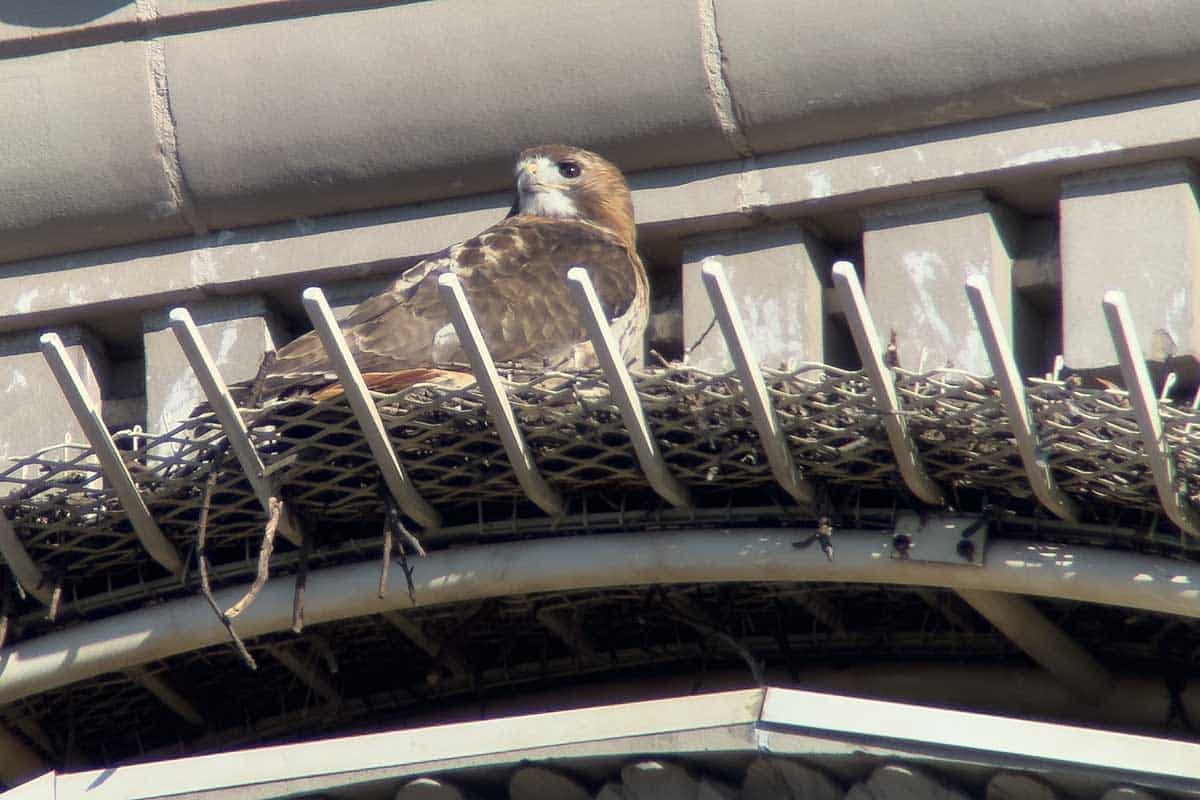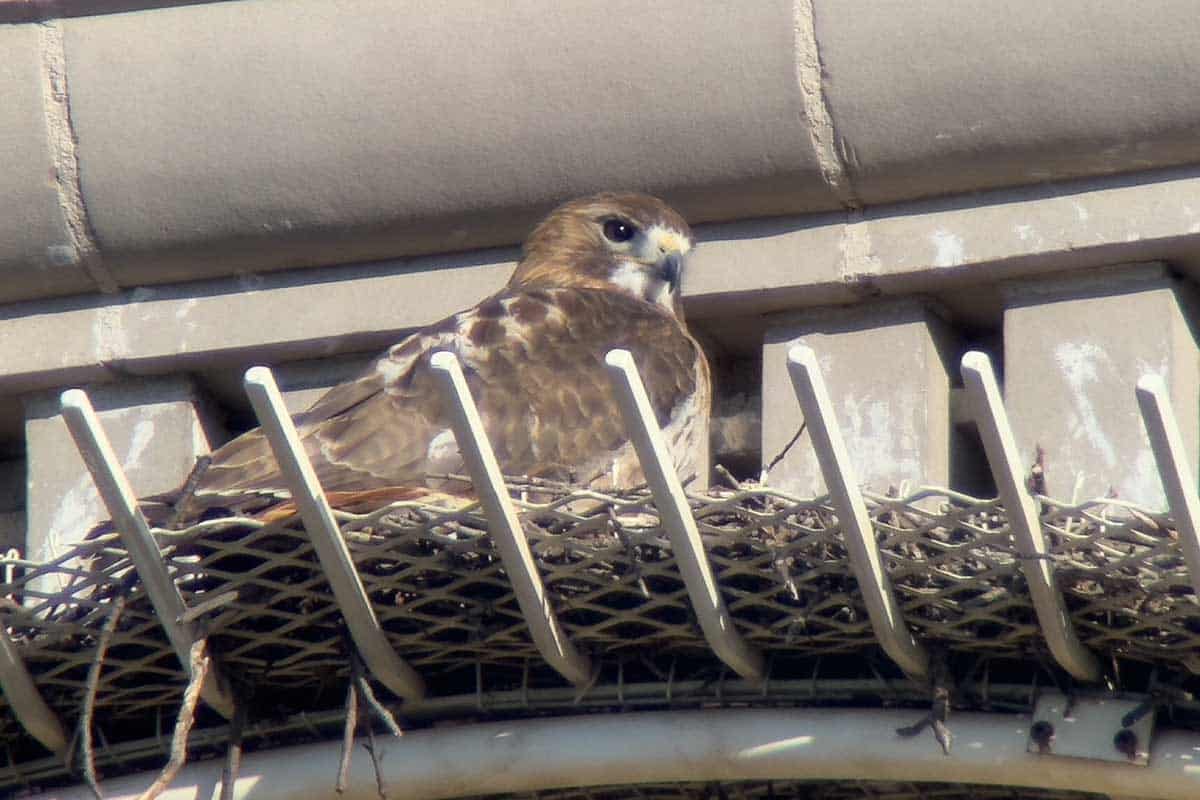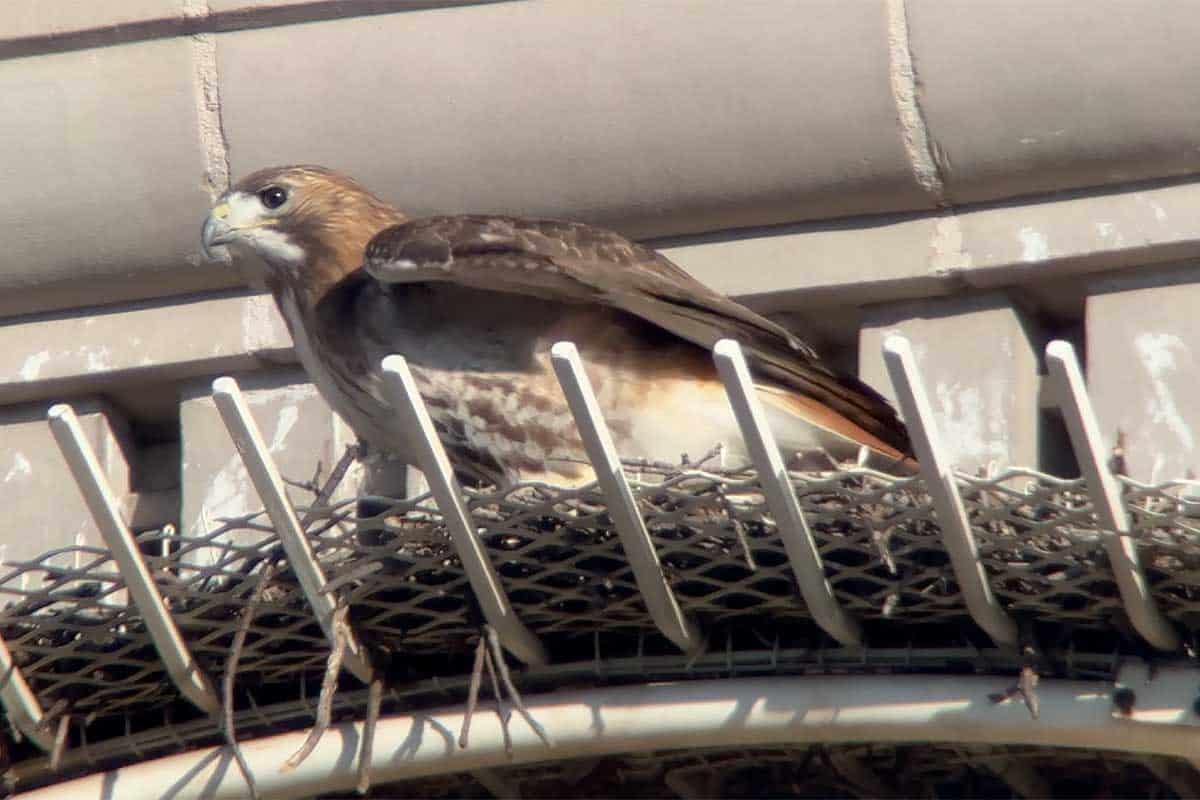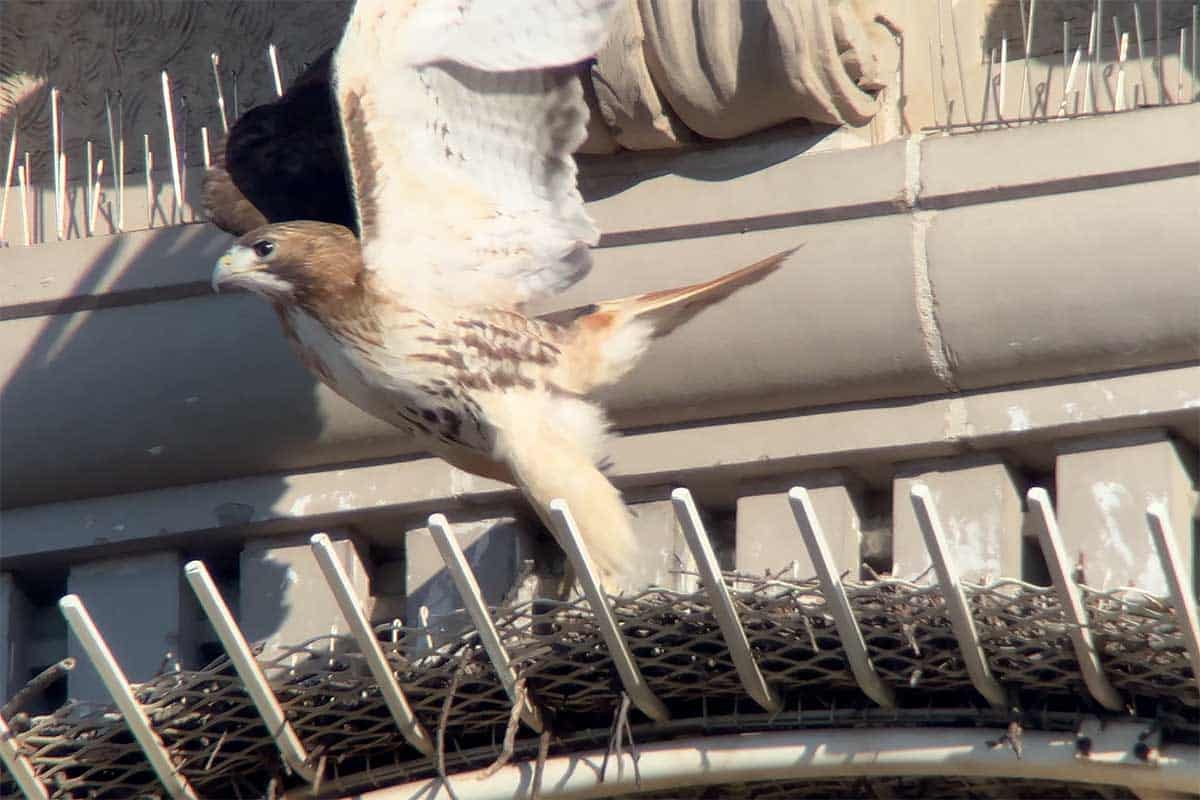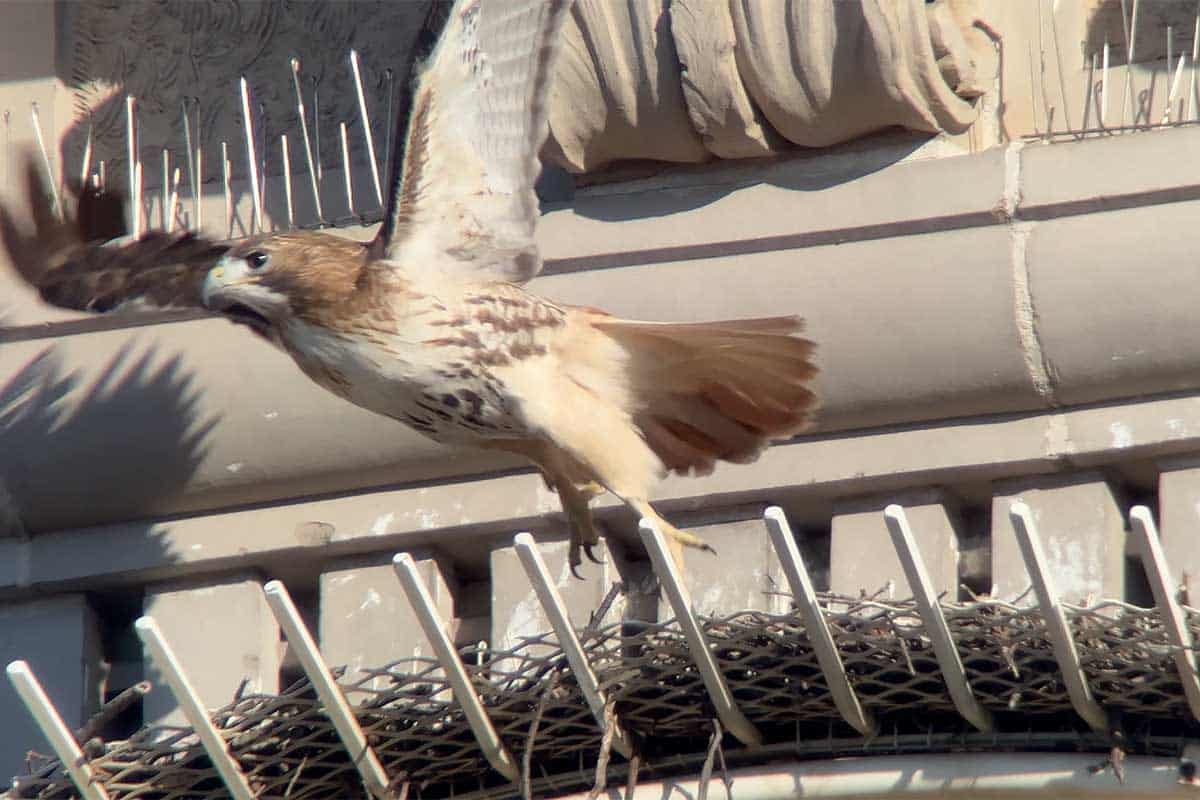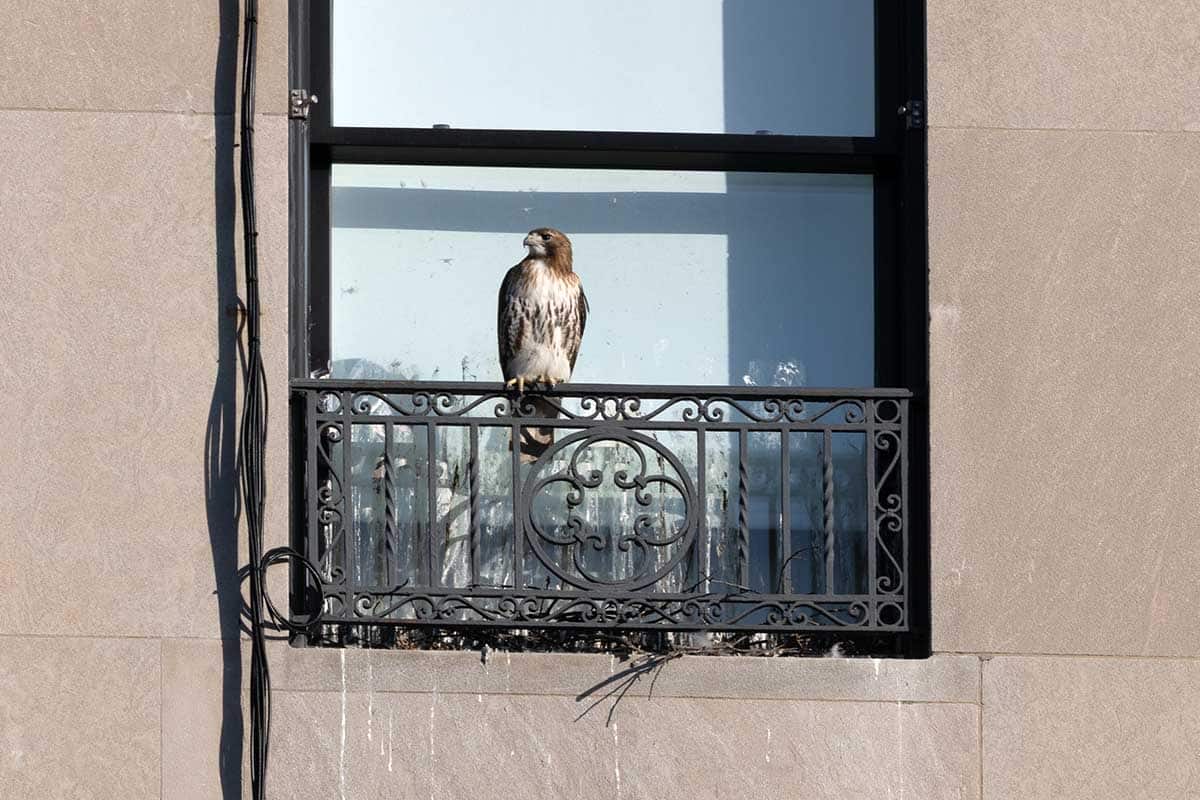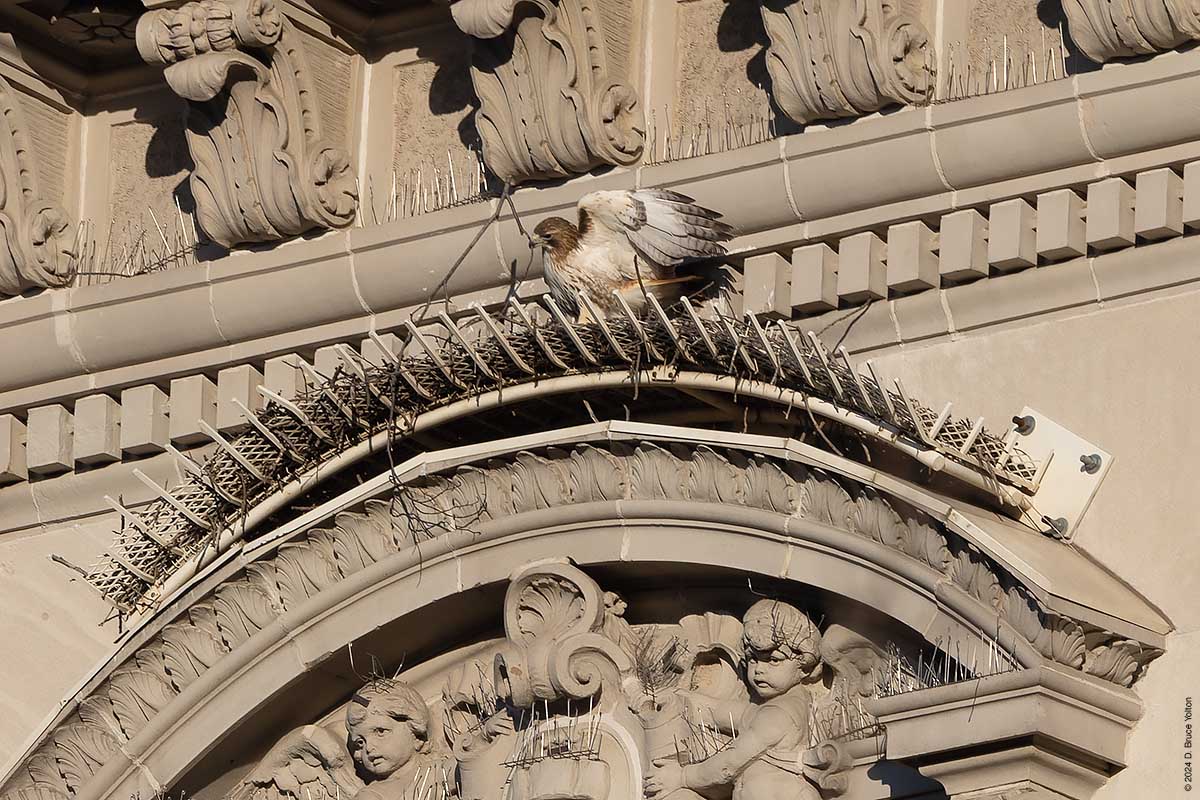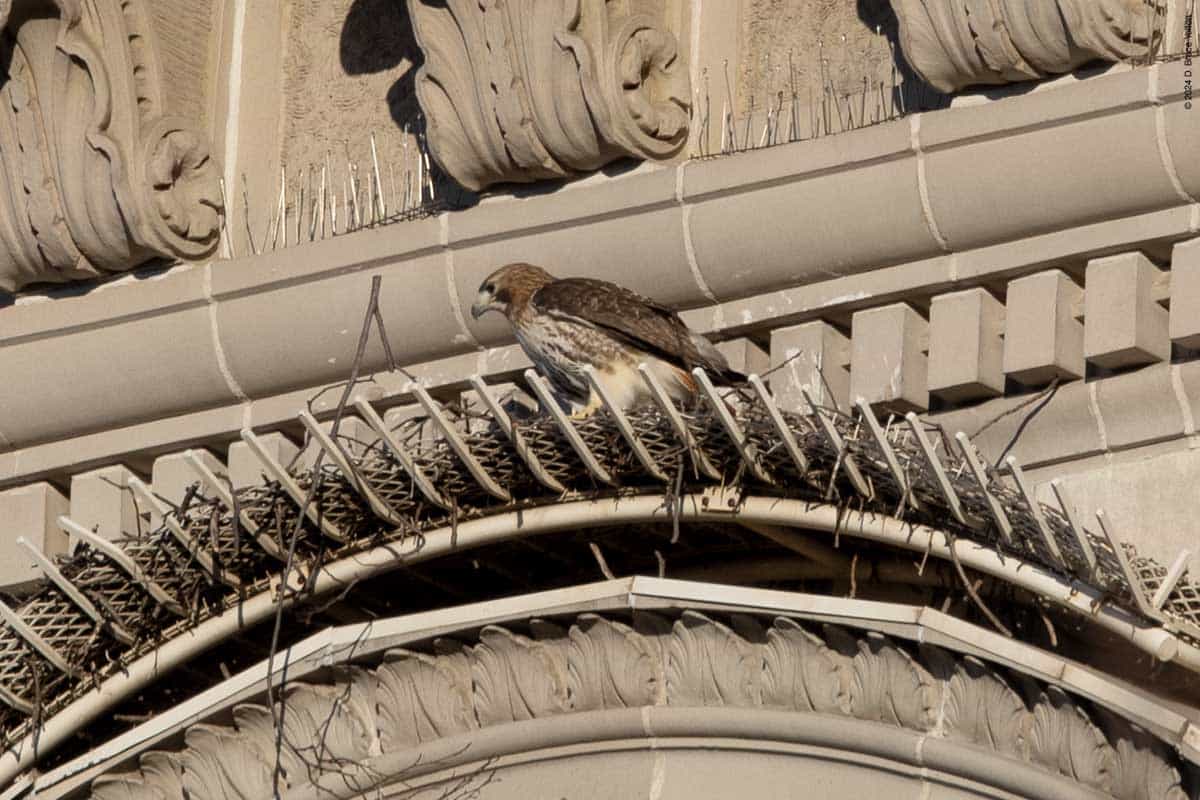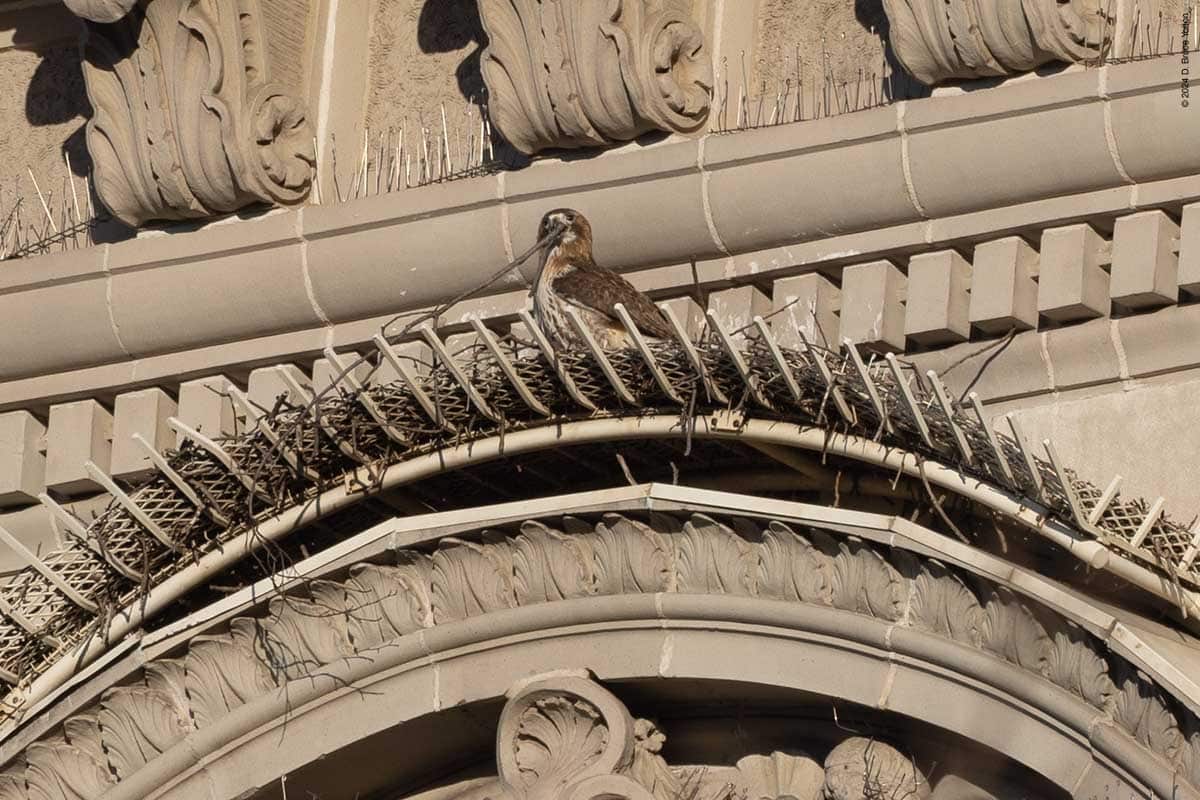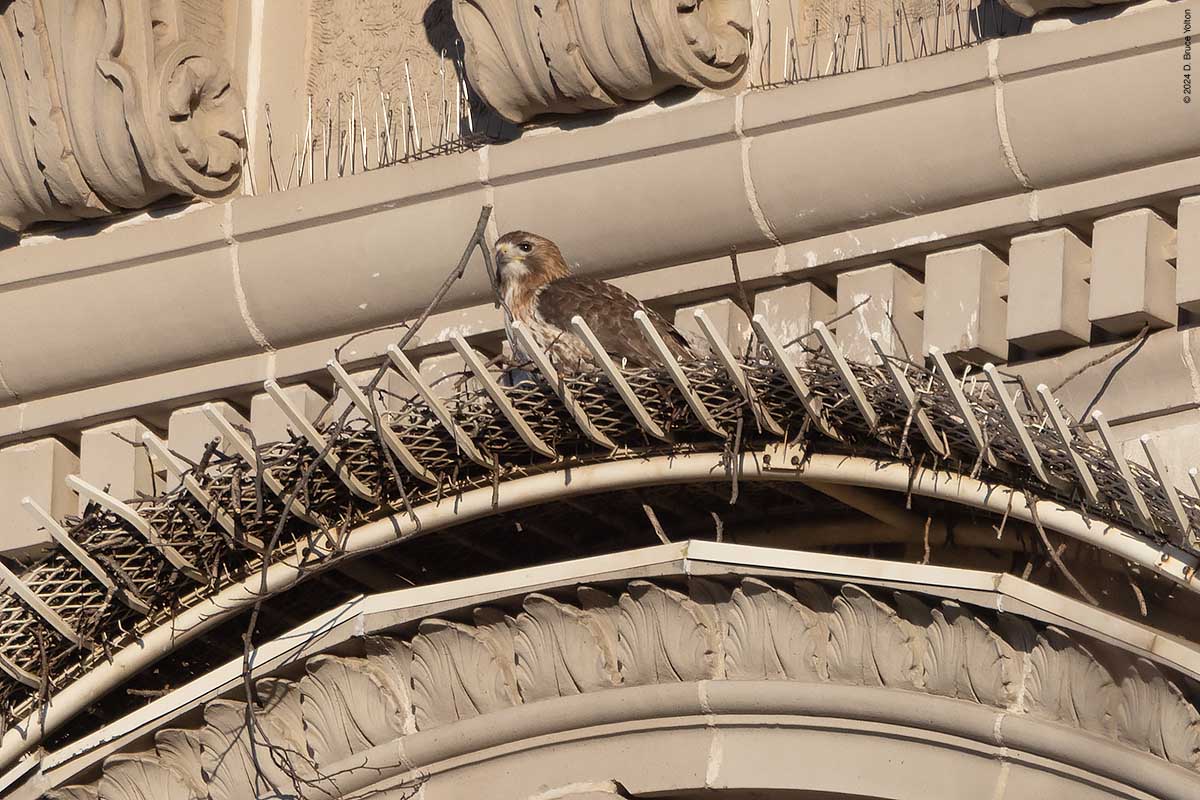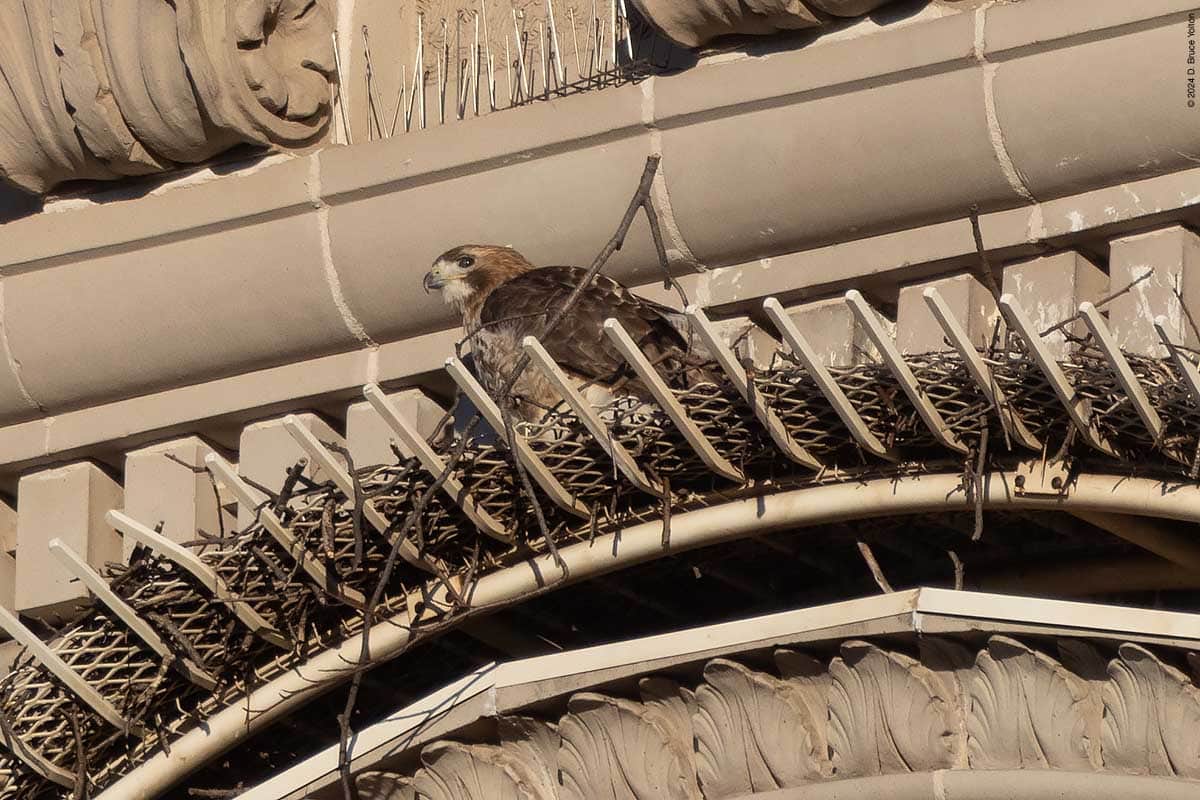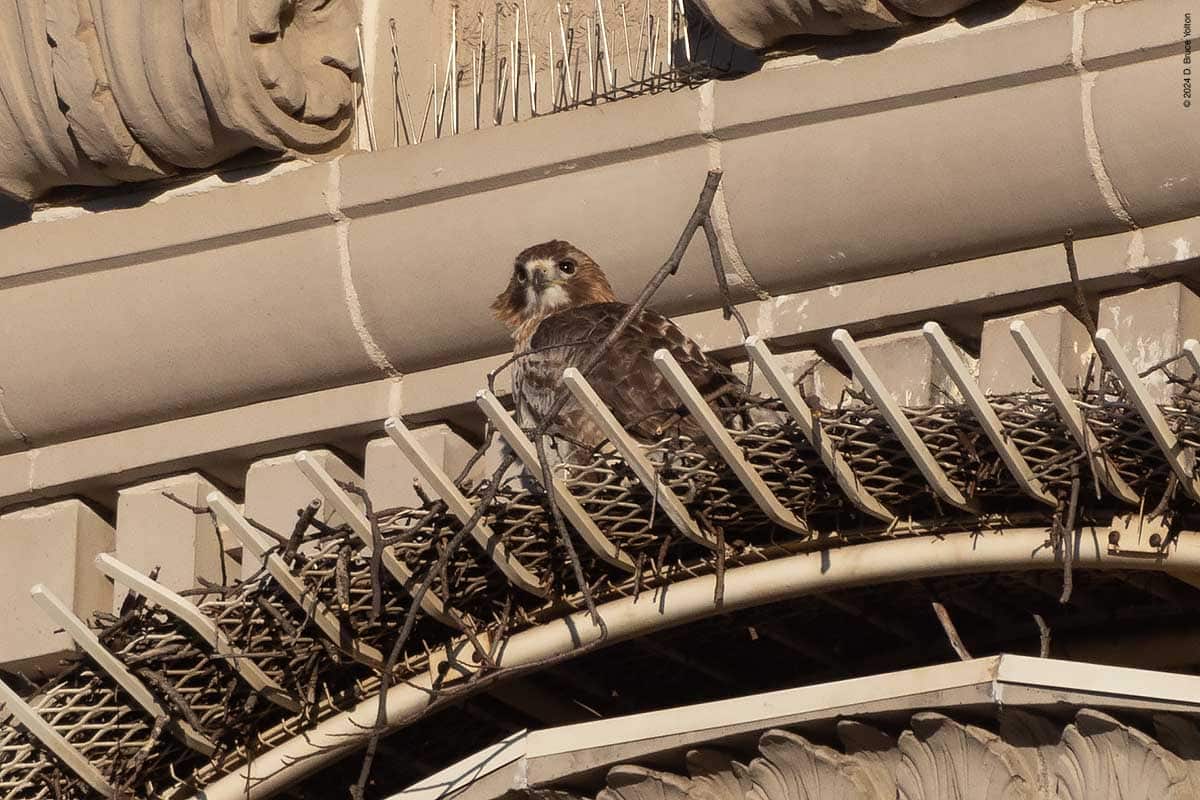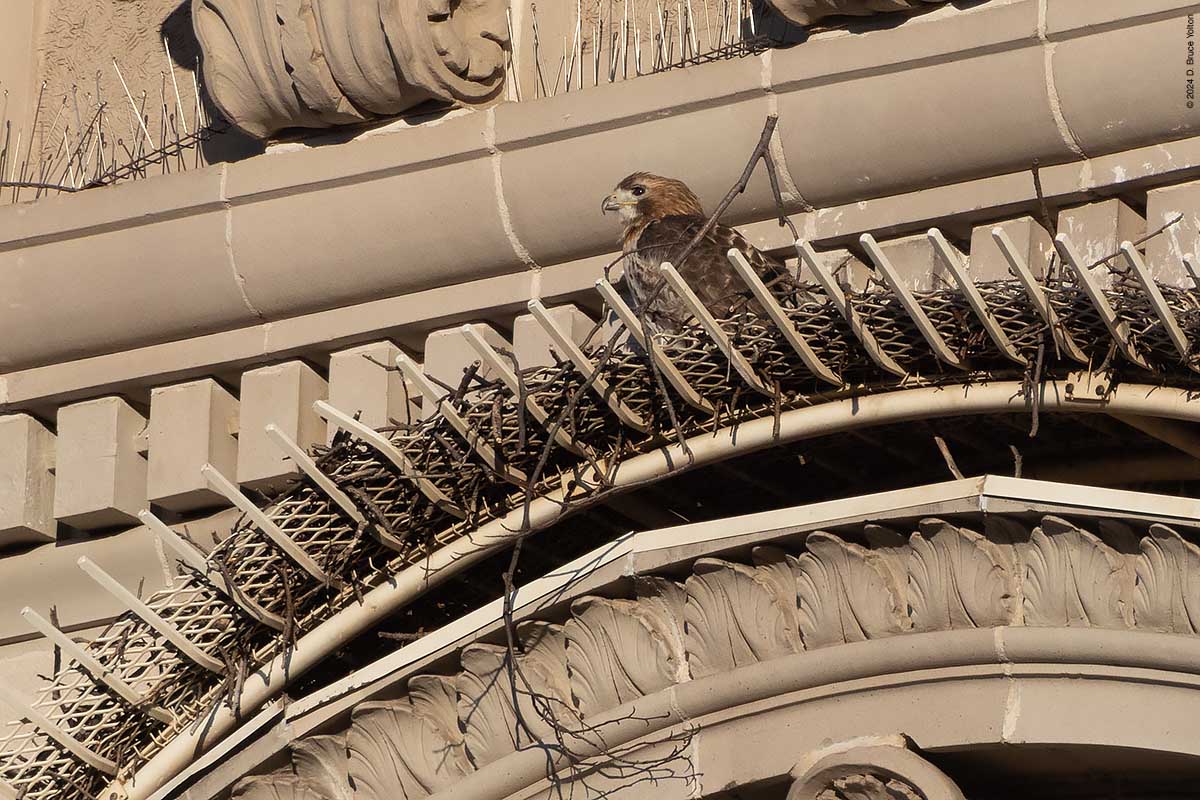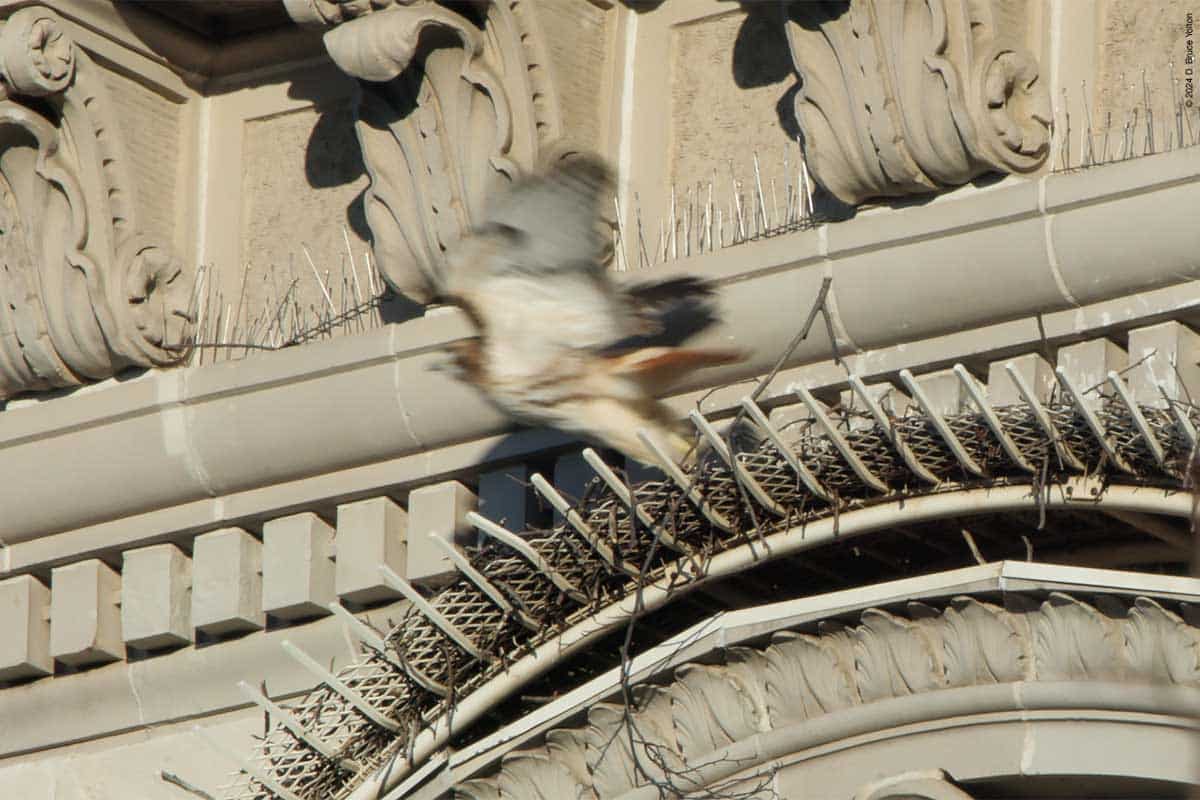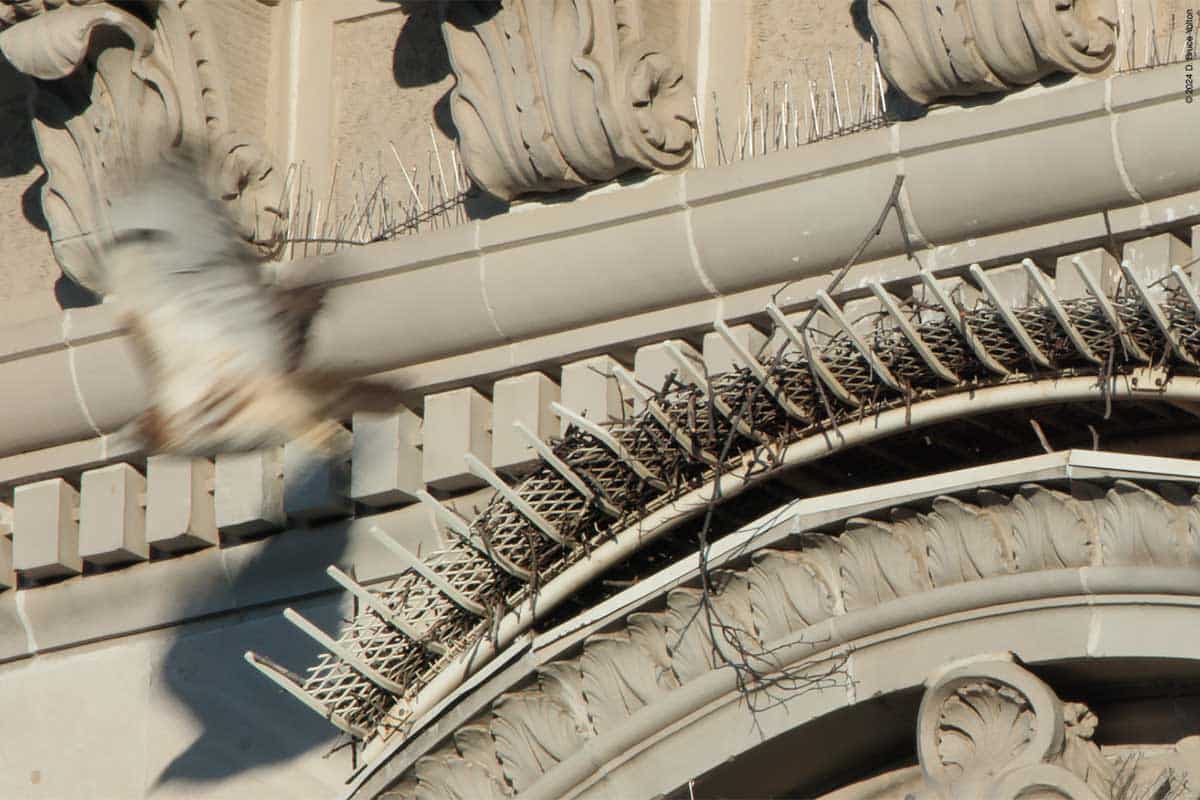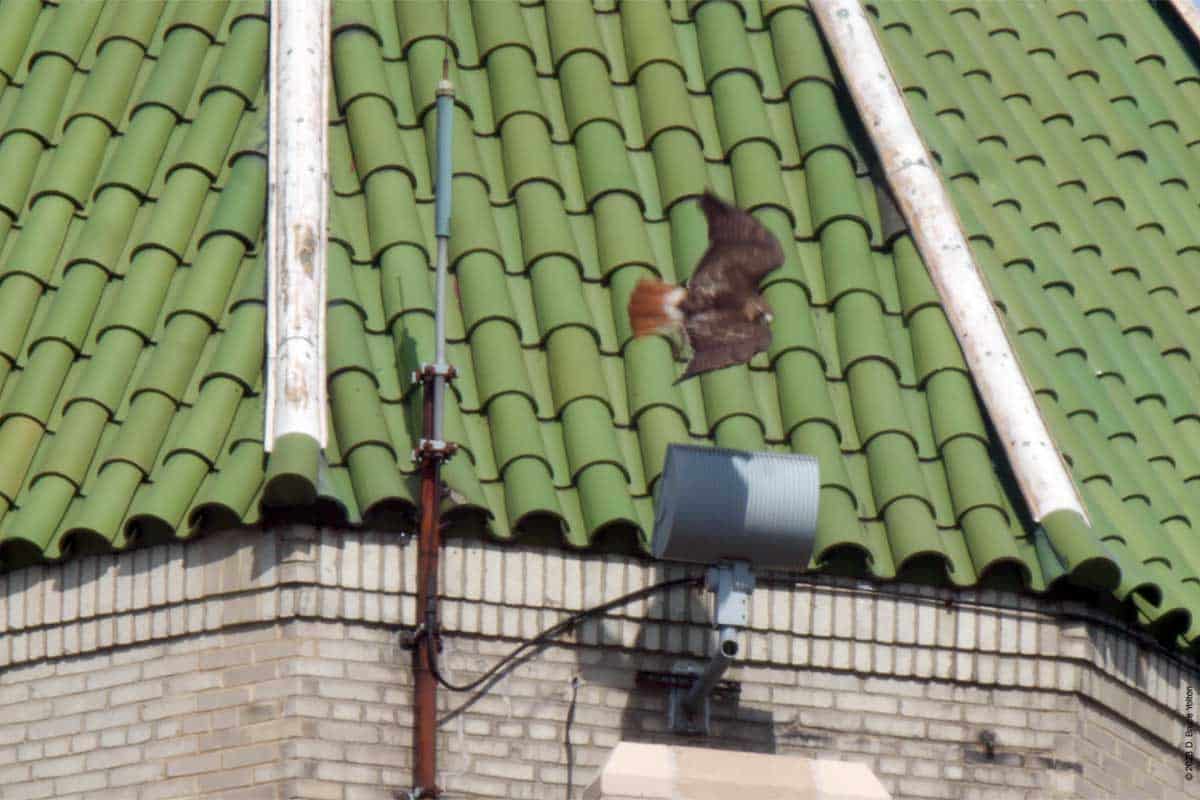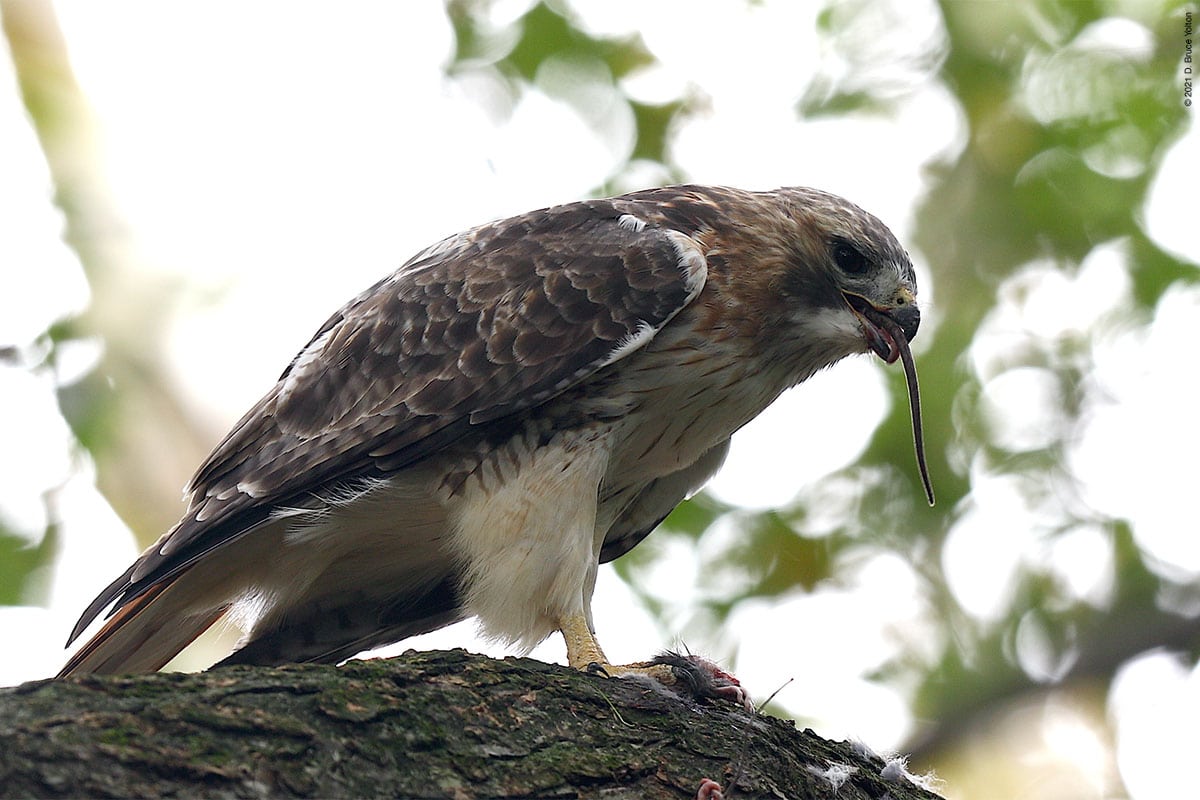Octavia on the 927 Fifth Avenue Nest
Octavia was on the 927 Fifth Avenue nest on Tuesday afternoon, and then on 960 Fifth Avenue. She looked great. But it’s hard to know what’s going on. She hasn’t had offspring for a number of years, so I’m not sure she’s interested in having offspring anymore.
It’s late enough in the season that I would have expected that either the 927 Fifth Avenue nest would have been rebuilt or a new nest built, but there looks to be very little activity. Melody Andres saw a new hawk bring a twig to tree near the Levin Playground earlier this week, but it was laid on top of a squirrel’s drey.
So, I have limited expectations for anything to happen this season, but it sure would be nice if I was wrong!
